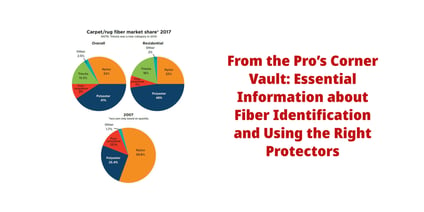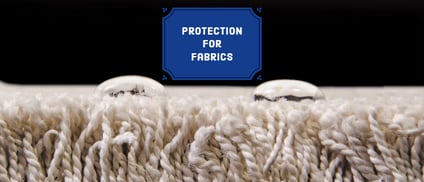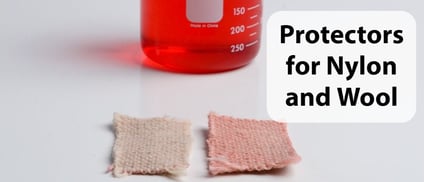Today we’ll talk about the newest fiber carpet cleaners are being asked to care for. You may not have even heard of triexta until a few years ago, but you may be cleaning more of it than you realize. Originally considered a variation of polyester, triexta was recognized as a separate category by the Federal Trade Commission in 2009. The carpet industry began tracking and marketing triexta as a separate fiber the following year.
Consumers may be identifying their carpet as triexta, SmartStrand, Sorona, or asking if you can clean fiber made from corn. Smartstrand Silk is the low denier (thin), super-soft version of this fiber. Even though “silk” is in the name, it has no connection to the silk fiber even if some consumers think it does.
Our industry saw its first official new fiber for many years in March 2009 when the Federal Trade Commission (FTC) recognized polytrimethylene terephthalate (PTT) as a new class of fiber. It had previously been considered a type of polyester. PTT was initially developed by DuPont back in 1941. In 1999 Shell started marketing PTT under the trade name Corterra. At first use of the fiber was limited and mostly in clothing fabrics, not carpets. Shaw industries began using and marketing Corterra as a carpet fiber in 2001. Mohawk began making PTT under the name Smartstrand beginning in 2004. A version of PTT including 37% of a DuPont resin that originates from corn was brought to the market by Mohawk. It is called Smartstrand with DuPont Sorona.
This could be spun into fibers and tufted into the carpet using the same equipment as was being used for nylon fiber carpets. With the ability to be processed on existing equipment and the green appeal of using corn, a renewable resource, PTT was off to a good start. With lower cost, greater resistance to water-borne stains, better resiliency than polyester, and some aggressive marketing, triexta’s market share grew rapidly and continues to grow even with an improving economy.
Why the change from considering PTT simply a type of polyester to giving these fibers its own name and classification? Mohawk and Shaw were seeing confusion among both retailers and the end-users when trying to explain the benefits of Smartstrand while still calling the fiber polyester.
Before the change could be made, the FTC had to be convinced that the fiber offered some real advantages in the marketplace. Advantages included a softer hand or feel than polyester, improved resiliency making carpets more durable, and improved resistance to some water-borne stains.
Characteristics of Triexta Fibers
- Lower absorbency than polyester or most other fibers, about .1%
- Resistance to oxidizing bleaches even laundry bleach.
- Resistance to acid dyes and food coloring found in many children’s drinks and sports beverages.
- Resistance to disperse dyes including the turmeric that makes stains from mustard and curry difficult to remove. Note that “resistance” is not the same as stain proof. In fact, during manufacture, triexta is commonly dyed using disperse dyes on a continuous dye range.
- Triexta is oleophilic and attracts oily soils.
Fiber Identification to Distinguish Triexta from Other Fibers
A burn test will distinguish between triexta and most fibers but the results will be the same as polyester. Separating these two fibers with 100% accuracy requires testing in a lab with microscopes not available to the cleaner in the field.
How to Clean Triexta Fiber
In years past, triexta was often manufactured into the carpet with no fiber protector applied. That has changed in the last year or so, with Mohawk, the leading manufacturer now marketing their factory-applied protector Nanoloc™ Spill and Soil Shield.
Triexta does not have the chemical sites for dyes to attach to that are found in nylon and wool. Dyes sites are also places for liquid stains to bond to the fiber. This allows oils and dry soils to release from the carpet easier. When cleaned regularly, oily and greasy stains can usually be treated effectively with dry solvents. Citrus boosters can also be included or added to the prespray.
For typical soil levels, we suggest surfactant-based formulas as the prespray. If the level of oily soil is high, balanced high alkaline formulas are an excellent choice. Hotter water helps. Use the rinse of your choice as neutralizing the alkalinity is not as necessary as with nylon. Apply a protector in the traffic areas known for their oil and soil resistance. Consumers should have triexta fibers cleaned at least once a year.
By Scott Warrington
Featured Products
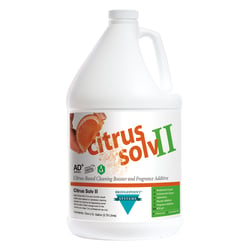 Bridgepoint Systems, Cleaning Booster, Citrus Solv II, 1 Gallon
Bridgepoint Systems, Cleaning Booster, Citrus Solv II, 1 Gallon

Bridgepoint Systems, Carpet Cleaning Prespray, Traffic Slam, 1 Gallon
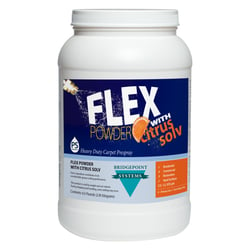
Bridgepoint Systems, Carpet Cleaning Prespray, Flex Powder w/Citrus Solv, 6.5 lbs

Hydro-Force, Carpet Protector, Advanced Protector, 1 Gallon
Enjoyed reading this post? Read the following articles:

